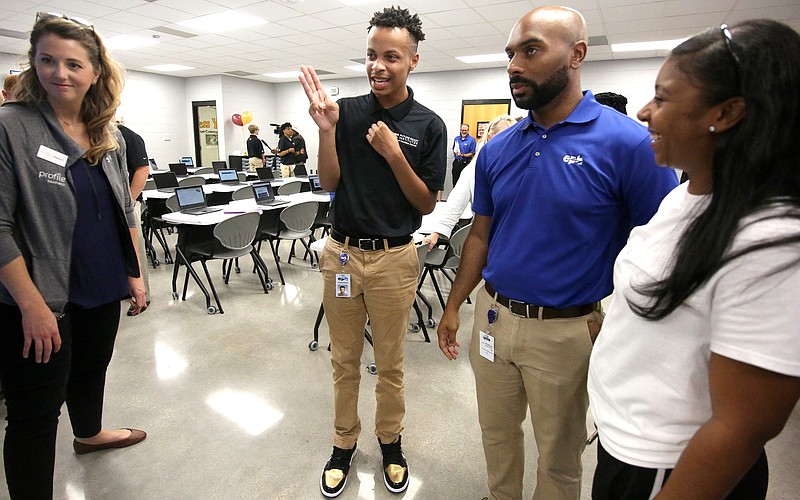The consolation prize for Hamilton County teachers for the 2019-2020 school year, after the Hamilton County Commission failed to vote for a 34-cent property tax increase that would have provided them a 5% raise, was a one-time bonus of $1,500.
For many in the community, that may have seemed like a slap in the face for county educators who traditionally have not been paid as highly as some of their counterparts in Georgia and some surrounding Tennessee counties.
The bonus, it was said, was the result of negotiations by the district's collaborative conference team.
But what, exactly, did that bonus represent for teachers?
For first-year Hamilton County teachers, whose salary for the 2019-2020 school year is listed at $40,050, a $1,500 bonus is equivalent to a one-time 3.75% raise. For 25-year teachers with doctorates, whose salary is listed at $69,473, it is equivalent to a 2.16% raise.
A 3.75% raise is higher than teachers have received in the past five years, according to Times Free Press archives. A 2.16% raise is higher than teachers received in two of those years.
While we didn't believe county residents were ready to spring for a 34-cent property tax increase, we advocated that school board members and commissioners work out a plan where at least the teachers got a 5% raise.
Although that didn't happen, the bonus was a compromise and a generous one at that.
"[I] think anything that we can give," school board member Tucker McClendon said this week, "although it will be one time, will go a long way for them and hopefully shows that we appreciate them and everything they do."
Fortunately, a $1,500 bonus - though it is one time (and payable in November) - spends just as well as a 3.75% raise.
But, as teachers learned Monday, the $1,500 wasn't the end of it.
The school district, according to new Chief Business Officer Brent Goldberg, came in $11 million under budget for the 2019 fiscal year and collected $8.9 million more in revenue than had been budgeted.
That, in itself, may say something about the district's budgeting process, but more on that in a moment.
Using the extra money, the district wants to return a chunk to its fund balance - from which it took $17.9 million during the last school year - and use $5.7 million to give school employees, including teachers, an additional bonus of $555 (emblematic of the Level 5 scores in five TVAAS categories the district received).
So, for teachers (and those classified as teachers by the BEP instructional salaries component), that's a combined $2,055 bonus.
For the first-year teachers, using the 2019-2020 figures, a $2,055 increase represents a 5.13% one-time raise. For 26-year teachers with doctorates, it represents a 2.96% raise.
So, for newer teachers who make less, the bonus goes farther; for more veteran teachers who make more, it's substantially less than an across the board 5% raise.
The under budget/more revenue money also will allow the district to fund digital fabrication labs and STEM equipment - two more items that would have been funded with the 34-cent property tax hike - and a long promised football stadium for Sale Creek Middle/High School.
All of the budget revisions must be voted on by the school board on Thursday.
During this year's budgeting process, Goldberg has maintained the district has for many years come in under budget and underestimated the revenues it would receive.
Of course it's better to overestimate budget needs and underestimate revenues, instead of the opposite, but a $400 million-plus operation should not continue to do that year after year. If the public were aware that such had been the case annually, the mistrust that had grown for years over the size and scope of the district's administrative staff and its fund balance likely would have been exacerbated.
Goldberg said the budget/revenue estimates are not likely to vary so much in the future - including for fiscal 2020 - because a tighter budget process has been adopted.
Overshadowed in the district's budget news was the report that the schools' 2018-2019 graduation rate rose from 86.6% to 86.9%. It's not a huge jump, and it was less than the overall state jump from 89.1% to 89.7%, but it's still the right direction.
Three schools - Chattanooga High Center for Creative Arts (CCA), Chattanooga School for the Arts and Sciences and Lookout Valley Middle/High - graduated 100% of their students, and nine schools exceeded the state average. Last year, only one school, CCA, graduated all of its students, but 12 schools exceeded the state average.
The district has a goal of graduating 90% of its students by 2023.
